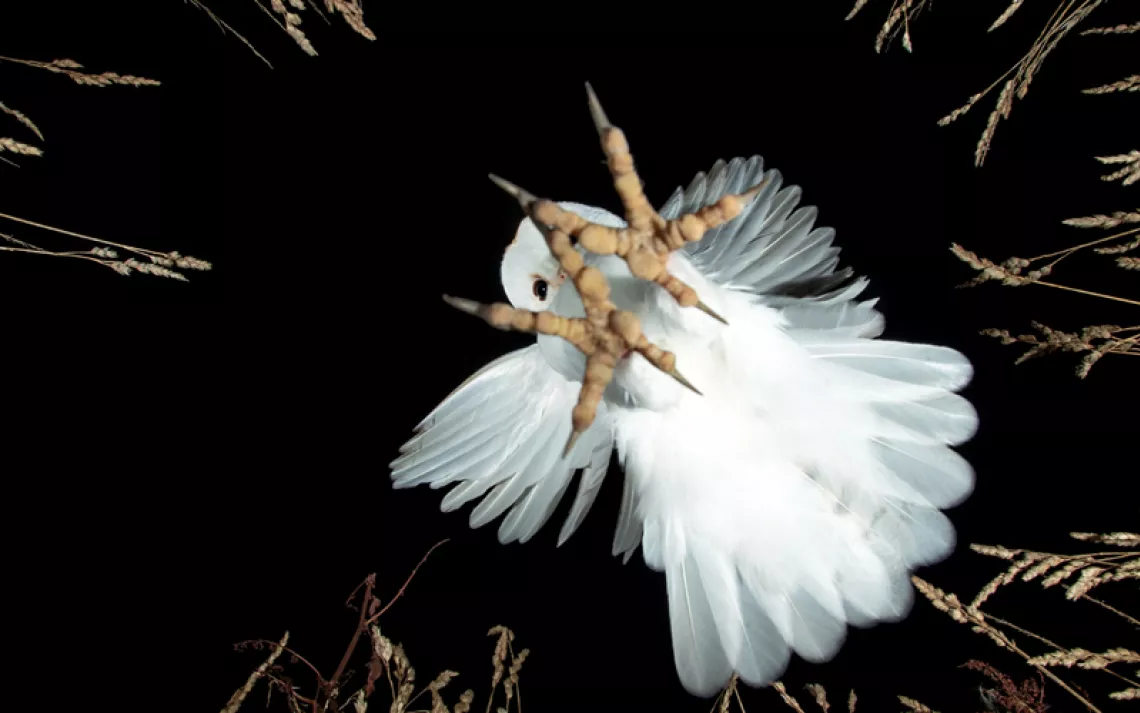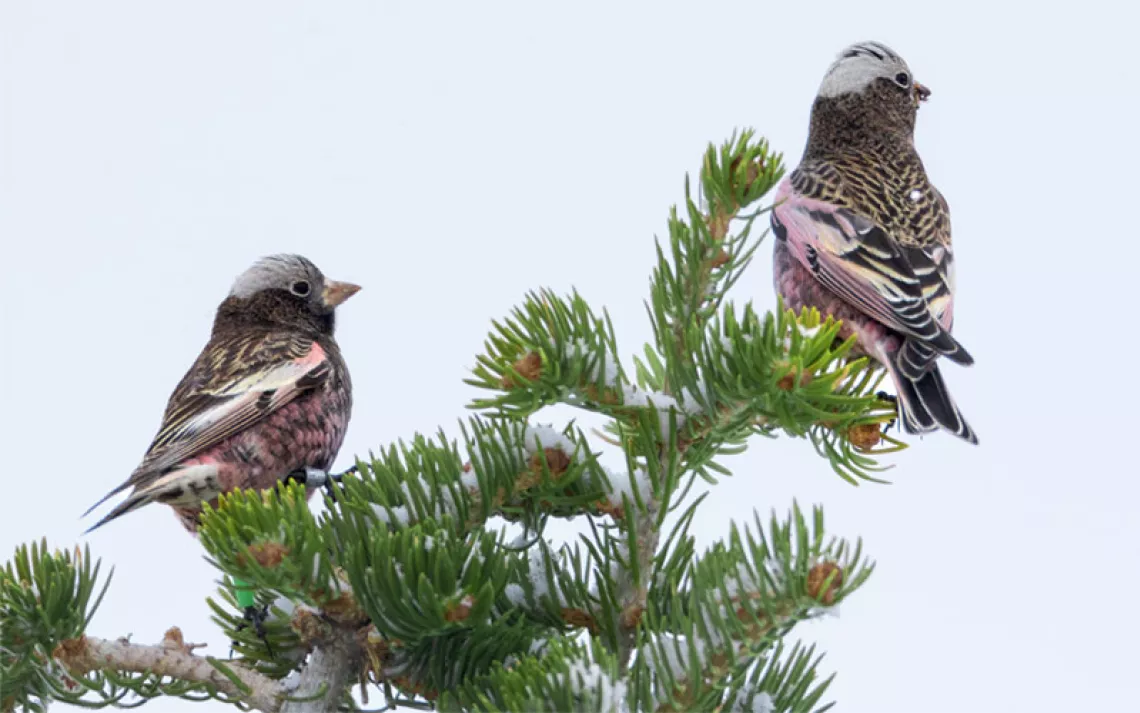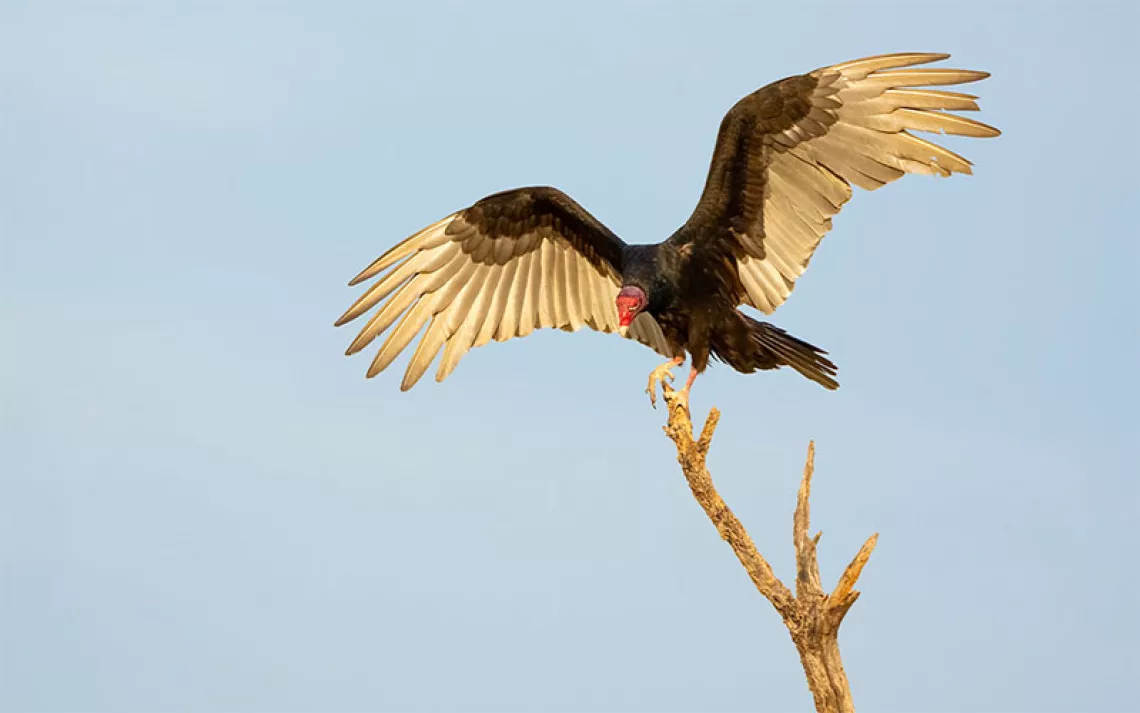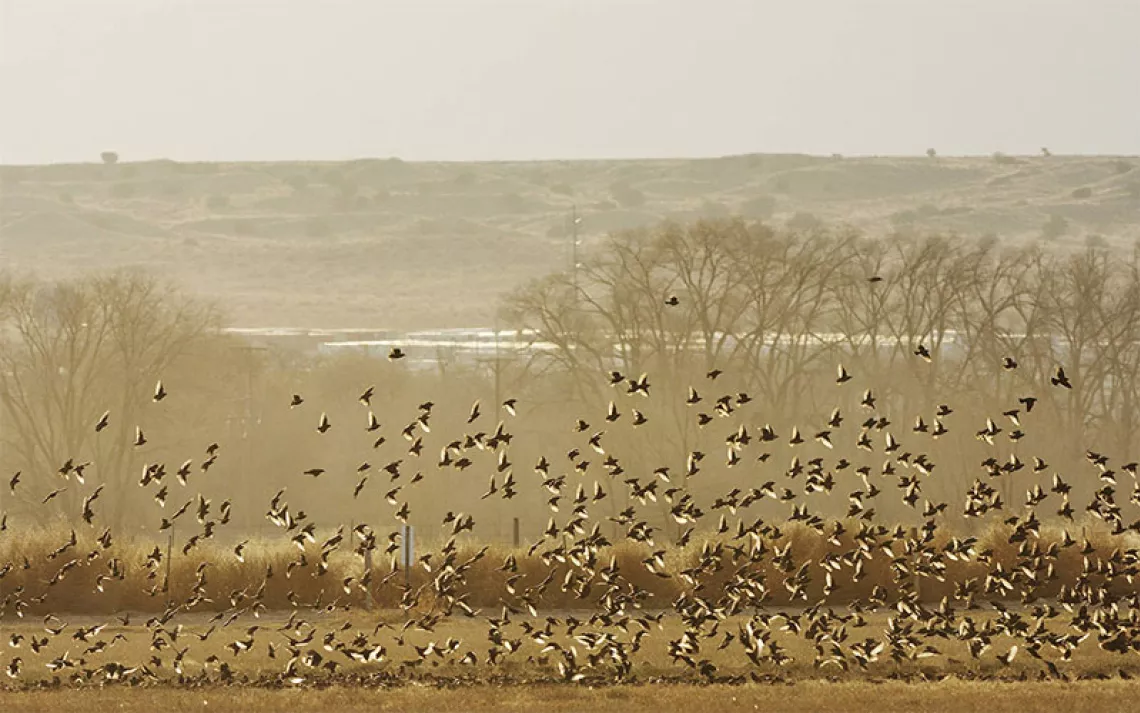Freaky Thermal Images of Birds Reveal Hidden Stress
Infrared cameras reveal animal anxiety
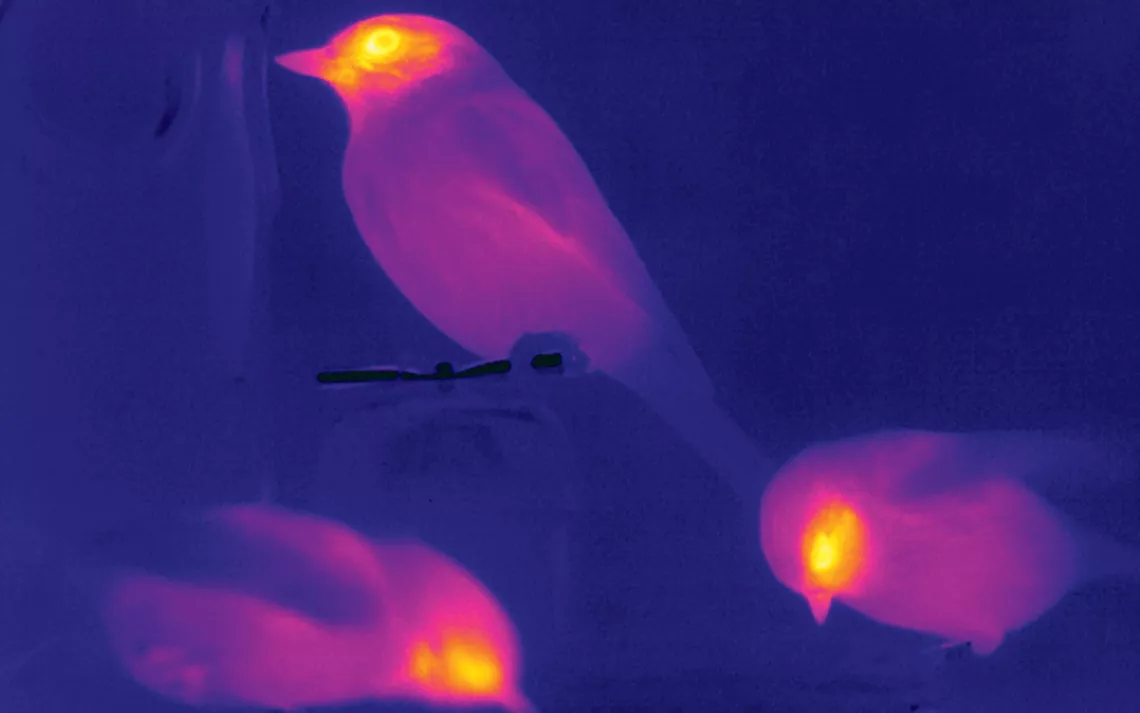
As a bird's stress level rises, blood is diverted to its core. The decrease in temperature is reflected around the bird's eyes, the only area not covered by feathers or scales. | Image by Paul Jarem
Humans stress out wildlife. We destroy their habitat, shoot guns at them, even change their climate. When wild animals are stressed, they divert energy and resources away from reproduction to survival, potentially placing their populations at risk.
To manage wildlife, policymakers sometimes need to know how much stress animals are under. Traditionally, researchers have had to capture animals and sample their blood for glucocorticoid hormones.
Paul Jerem, a doctoral candidate at Glasgow University, has devised a far less invasive method for measuring stress in birds, snapping images of them with a thermal camera. "It is exactly the same as photography except you're looking at infrared radiation instead of visible light," he says.
Jerem's method of inducing stress is somewhat old-school: He attaches a stuffed sparrow hawk to a clothesline controlled by pulleys at Glasgow University's Loch Lomond field station and sends it barreling past wild birds at a feeder. (See the mesmerizing video below.)
"To be able to measure stress without increasing the stress of the animal [by capturing it and sampling its blood] could be important in allowing us to understand how birds respond to disturbance, noise, and other types of stressors," says David Wiedenfeld, senior conservation science specialist at the American Bird Conservancy.
Jerem notes that his research should be applicable to many vertebrates, and he hopes that it can be used to formulate plans to save endangered populations. "We don't really know if chronic stress is a problem in wild animals," he says, "but we need to find out."
WHAT YOU CAN DO
You can reduce stress in wild birds, says the American Bird Conservancy, by providing water (especially in drought-stricken areas like California), staying clear of nesting sites, and keeping your cat indoors.
 The Magazine of The Sierra Club
The Magazine of The Sierra Club
